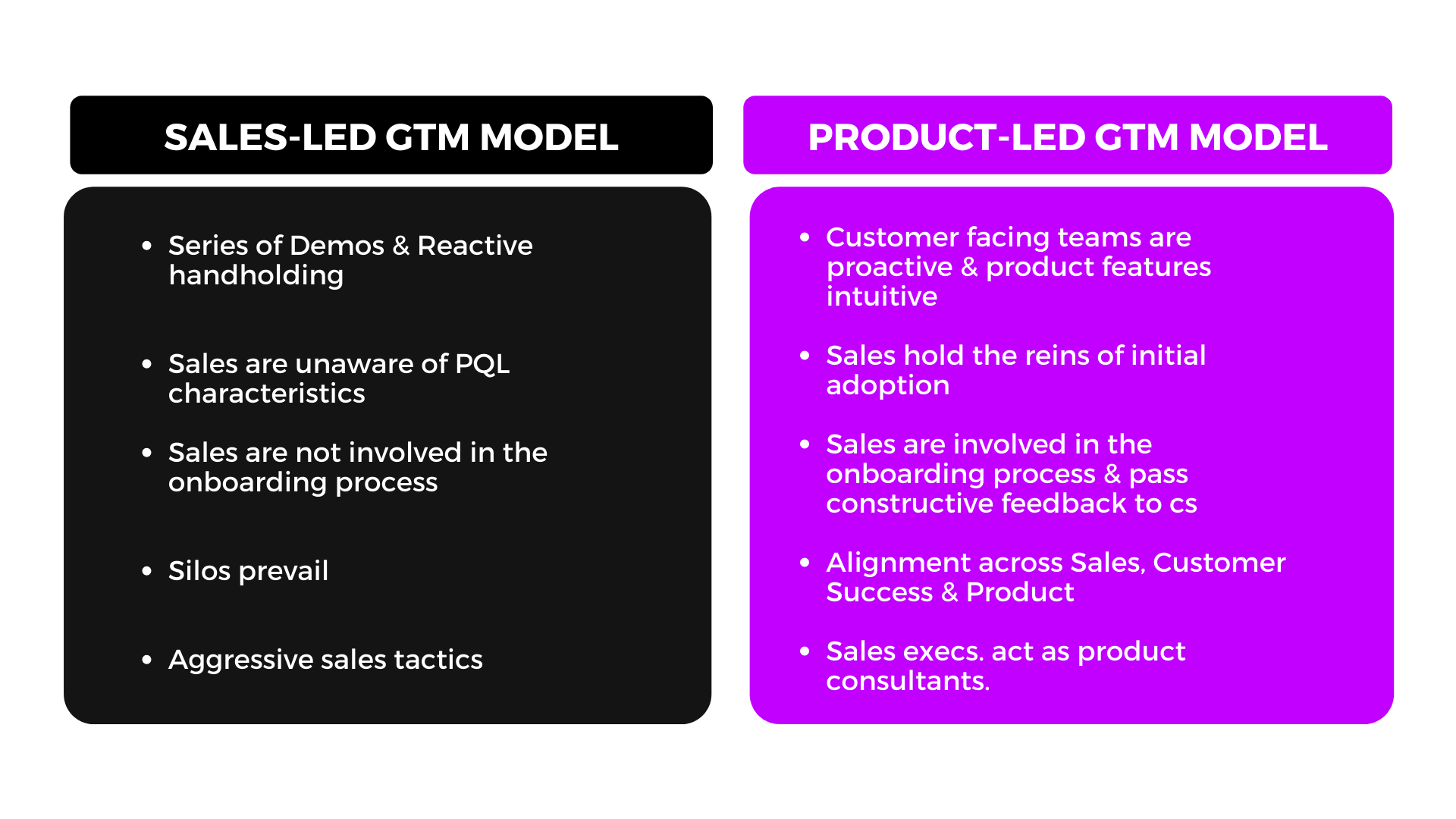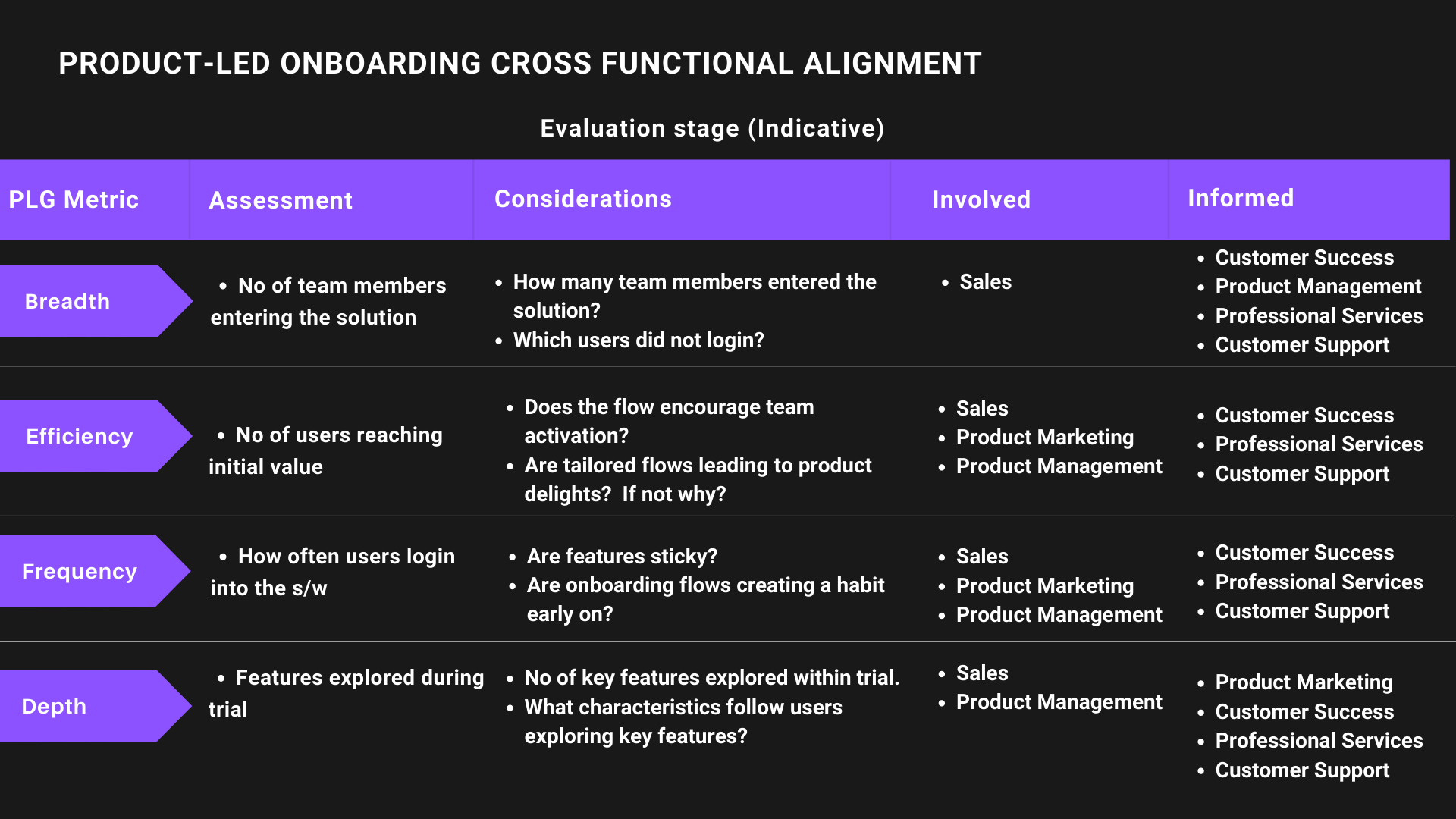As product-led growth rises, the SaaS industry finally seems ready to start abandoning its archetypes. The false dichotomy that a sales strategy can either be self-serve or human-assisted gradually fades out. Product experience, a new word for many, proves to be the middle ground when referring to organizations’ growth and long-term prosperity.
Many product-led pioneers will claim that they are able to balance the human-product analogy by delivering a self-serve approach alongside a traditional human-led one. But the majority of organizations can’t actually connect the dots between product-led growth and business outcomes.
While these extremes rule the industry, product-led onboarding (PLO)—a direct outcome of product-led growth go-to-market practices—acts as the balancing act, combining the two widely preferred sales strategies into a user onboarding model that moves accounts through the customer lifecycle.
What is product-led onboarding (PLO)?
Product-led onboarding (PLO)™, a term we at the Product-Led Growth Hub introduced in May 2019, is a set of data-driven product engagements that consider behavioral notions and users’ proficiency. As a strategy, it avoids random feature introduction to users. Instead, it exploits historic data and considers users’ proficiency when exploring a product for the first time.
Contextual guidance is PLO’s main pillar, enabling organizations to double down on the product experience and users’ workflows early on. Here are some growth metrics that product-led onboarding relies on:
- Breadth of use: This assesses the extent a product is being used on an account level, monitors account health, and helps teams proactively manage churn.
- Depth of use: Depth evaluates feature adoption, both on a user and account level.
- Efficiency of use: Product teams can use this to understand how easy it is for users to explore a feature and where they drop off.
- Frequency of use: This monitors how often users return to the product and for which feature, allowing teams to proactively manage churn and estimate when users need to be reactivated.
The question of ownership
Understanding what makes up a product-led onboarding strategy is only half of the equation. Naturally, a new way of delivering onboarding brings up the question of ownership. How can organizations best deliver product-led onboarding? With dispersed onboarding ownership and an established loop across (and within) teams.
Before product-led growth became popularized, onboarding ownership had been pretty standardized. For the majority of organizations (assuming that a self-serve strategy was at play), onboarding was subject to product management and product marketing activations, with customer success transforming its practices into a thorough systemic process embraced by teams across the company.

Our PLG research proved that this realization tends to be very narrow. Onboarding actually has more owners than originally thought. For customer success-led onboarding, sales also takes ownership (69%) while product management (38%) and marketing (23%) affect the process somewhat. For self-serve onboarding, ownership is dispersed across product management (81%), marketing (77%), customer success (68%), and sales (40%).
What does this tell us? For onboarding delivery to be successful, it is imperative that organizations achieve cross-functional alignment and establish a common set of metrics to assess user onboarding ROI.
The product-led onboarding framework achieves this by:
-
- Involving the sales organization in the onboarding process early on, to shorten and smoothen the sales cycle.
- Enabling customer-facing teams to become product-driven and complement their high-touch approach with tailored product engagements.
- Reinforcing product management practices throughout every part of the onboarding process.
- Making the product (and in-product engagement KPIs) the single source of truth across the customer lifecycle.
As you evaluate and strategize cross-functional alignment for product-led onboarding, use this cheat sheet to help you:

What product-led onboarding means for sales
With the rise of product-led growth, sales teams have had to reconsider their methodology from the ground up. How can their strategy be incentivized via product analytics and product experience? Is it possible for sales to develop a common agenda with customer success and product management and accelerate the onboarding process?
Our research proved that while outreach, free trials, sign-ups, and product-qualified lead (PQL) scoring are top metrics for every organization, only 20% of the participants (those who have adopted product-led onboarding) assess their PQL criteria in real-time and tailor the product experience consistently.
In an effort to reassure buy-in from end users, sales team members should initiate the onboarding process during the evaluation stage. They achieve this by adopting a customer-centric consultative approach, similar to that followed by customer success. At the same time, beyond claiming ownership of initial adoption (activation), they observe prospects’ online and in-product behavior and are able to emphasize on context of usage, use case, and role.

In this scenario, sales and customer success share onboarding ownership, with the former owning activation and the latter owning retention and expansion. With their data-driven approach, the sales team can pass valuable insights to customer success and professional services, which manage the rest of onboarding deployment. Sales can also use qualitative and quantitative data to pinpoint any instances where the product experience might be broken, and pass insights to the product team. They are also able to identify PQLs, helping to evaluate onboarding ROI early on.
What product-led onboarding means for customer success
The first stage of the customer success journey is adoption—and at this point, onboarding is no longer a mere functional process. It becomes the foundation of the buyer-vendor relationship going forward.
With product-led onboarding, teams inject human-assisted activations into product onboarding itself and leverage in-app guidance to optimize customer success’ human resources allocation. Our research showed that user training at-scale allows customer success to focus on customers’ business objectives by dedicating hardly 25-30% airtime to in-application onboarding. Product experience tools enable CS to assess in real time the impact in-app training has on adoption and retention.
Product-led onboarding helps accelerate the overall onboarding process. The fact that sales initiates the onboarding process and offers valuable feedback allows customer success to move conversations forward beyond the initial success criteria. Additionally, customer success and product management can deliver a jobs to be done (JTBD) onboarding framework at scale, tailored to each user’s role, product usage, and use cases.
Besides the fact that customer success can proactively solve for customers’ needs, product-led onboarding also makes it so they can capitalize on product data, monitor onboarding ROI, and gain buyers’ trust easier. By having product engagements providing tailored experiences, adoption is becoming the low hanging fruit of the onboarding process.
The results of product-led onboarding at scale
Some of the many barriers teams were facing prior to deploying their product-led onboarding strategy were increased acquisition and retention costs, internal silos, and the inability to optimize human resources allocation in departments like sales, engineering, customer support, and customer success.
The fact that product-led onboarding engagements didn’t require active participation of different units and delivered tailored experiences decreased time-to-value, allowed buyers to be more autonomous, and saw ROI skyrocket. Through our research, we’ve found that product-led onboarding adopters:
- Drive new product releases’ success by segmenting users proficiency in-app
- Increase frequency of use by 70%
- Double trial to paid conversions
- Increase breadth of use (team activation) by almost 90%
- Decrease onboarding costs by 60%
To dig deeper into product-led onboarding, you can learn more by accessing:
- Our PLG research here.
- Our research study on Hubspot’s Product-Led Onboarding strategy
- Our PLG study on Wistia
- A case study on Close’s onboarding
- Register for free to PLG Hub’s updates Product-Led Onboarding tips & tricks on our weekly newsletter.

